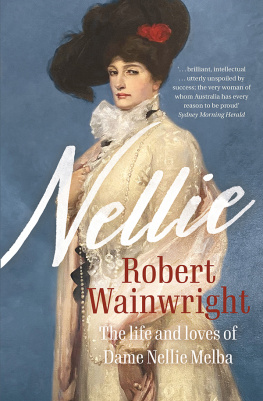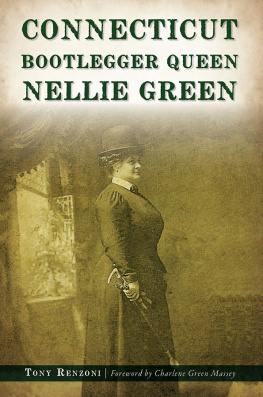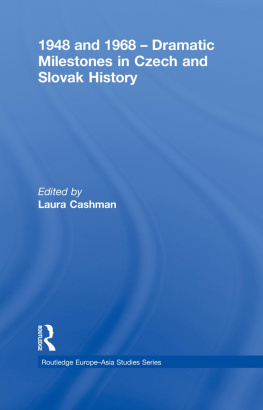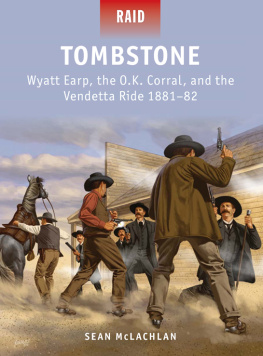GOLD RUSH QUEEN

Camp along the Koyukuk River, Wiseman, Alaska, six miles (9.7 kilometres) from where Nellie Cashman lived for twenty years, c. 1915.
FROM THE ROGER KAYE PHOTOGRAPH COLLECTION, IDENTIFIER UAF-1993-72-13. COURTESY OF ARCHIVES, UNIVERSITY OF ALASKA FAIRBANKS.
Gold Rush Queen
THE EXTRAORDINARY LIFE OF NELLIE CASHMAN
THORA KERR ILLING

Copyright 2016 by Thora Kerr Illing
All rights reserved. No part of this publication may be reproduced, stored in a retrieval system, or transmitted in any form or by any means, electronic, mechanical, photocopying, recording, or otherwise, without the prior written permission of the publisher. For more information, contact TouchWood Editions at 1031075 Pendergast Street, Victoria, BC V8V 0A1. Visit our website at touchwoodeditions.com.
The information in this book is true and complete to the best of the authors knowledge. All recommendations are made without guarantee on the part of the author or the publisher.
Editing by Marlyn Horsdal
Cover and interior design by Pete Kohut
Cover images found in the public domain. Image of Nellie Cashman courtesy of the Ben T. Traywick Collection; image of Tombstone, 1881, by C.S. Fly.
LIBRARY AND ARCHIVES CANADA CATALOGUING IN PUBLICATION
Illing, Thora Kerr, author
Gold rush queen : the extraordinary life of Nellie Cashman / Thora Kerr Illing.
Issued in print and electronic formats.
ISBN 978-1-77151-159-9
1. Cashman, Nellie, 18441925. 2. Women pioneersWest (US)Biography. 3. PioneersWest (US)Biography. 4. West (US)Biography. 5. Frontier and pioneer lifeWest (US). 6. Frontier and pioneer lifeArizonaTombstone. 7. Tombstone (Ariz.)Biography. I. Title.
F595.C342I45 2016 978'.02092 C2016-903305-8
We acknowledge the financial support of the Government of Canada through the Canada Book Fund and the Canada Council for the Arts, and of the province of British Columbia through the Book Publishing Tax Credit.

For Dorothea Maria Johnson (19222015) wise woman and friend
CONTENTS

Nellie Cashmans tombstone in Ross Bay Cemetery, Victoria, BC.
PHOTO BY PETE KOHUT.
INTRODUCTION
REQUIESCAT IN PACE reads the grey granite plaque over the grave of Nellie Cashman, mining pioneer and philanthropist, in the Ross Bay Cemetery in Victoria, British Columbia. Anyone familiar with the picaresque life of the deceased may question whether Nellie would have wanted to spend eternity in peace. Certainly she was a good Roman Catholic, but she was incurably restless, working the mining camps of the United States and Canada for more than thirty years before settling in Alaska for the last twenty years of the long adventure that was her life.
The lure was silver and gold, and Nellie, like all long-time prospectors, believed that the big bonanza, the great strike, was always just over the next hill. There was always another prospect to investigate, another shaft to sink. It was exciting and it was addictive. Running a boarding house or a grocery provided the money to fund prospecting and mining, but for a woman of Nellies mettle, that was not enough. She loved the talk of the camps, the respect she won, the thrill of the chase. Despite the hardships, she described mining as a romantic business and for her it was. She shared many traits with the best of the prospector-miners. They were tolerant and honest, they trusted each other, and they shared what they had.
Even before she found her mtier in mining, Nellie knew she was not destined to be a servant or a factory girl, the fate of many young Irish famine emigrants. Determination shows in her portrait as a young woman, and that quality comes through again and again in her life story. Over the years she had some health setbacks, but she was physically as well as mentally tough. She lived to be eighty and was active until shortly before she died. She thought nothing of sleeping out in the snow, and for years she allowed herself only two blankets as coverings. At a time when She told Lockley that she had never carried a gun and would not know how to shoot one.
The Klondike Nugget paid tribute to Nellies career in April 1900, saying, There is not a mining camp in the country where she is not known and loved, as her many deeds of charity have endeared her to the hearts of all who ever knew her... Nellie... knows more about mining in all branches than many a man who poses as an expert. Nellie was a self-educated geologist but learned her lessons well. Men came to respect her judgment, and superstitious miners saw her arrival in a camp as a sign of good luck.
The landscape of the narrative changed frequently, but there were constants too. Nellies Roman Catholic faith was central to her life. Even in Alaska, far from a church and a religious community, she was spiritually at peace. She commented, It takes the solitude of frozen nights with the howl of dogs for company; the glistening fairness of days when nature reaches out and loves you, shes so beautiful, to bring out the soul of folks.
Nellie has a special place in the history of the Old West as a virtuous woman. She was endlessly generous. She made money but gave much of it away, to the Roman Catholic Church to build a hospital and to fellow miners who were down on their luck. No hungry man was turned away from the several restaurants she ran, and she would dip into her own savings to help other mining hopefuls equip themselves for an expedition. Among the prospectors and miners of North America there were other kind women who cooked for and nursed men, but almost none whose ambition to make a fortune had no personal motivation. Nellie wanted money to make life easier for others.
When Nellie moved north of the Arctic Circle around 1904, she was one of a very small number of women to settle there. That did not worry her. She said to Lockley, The further you go from civilization, the bigger-hearted and more courteous you find the men. Every man I met up north was my protector, and any man I ever met, if he needed my help got it, whether it was a hot meal, nursing, mothering, or whatever else he needed. After all, we pass this way only once, and its up to us to help our fellows when they need our help.
She was clearly good company, and she liked to laugh. A fellow prospector, Edward Morgan, who knew her well, commented, She had the gift of palaver and was a most convincing talker.chose to journey alone. She made friends for life, but she did not need a husband for security or happiness.
Unfortunately, she left no written memoirs, although she did write letters to her sister and her favourite nephew, and she liked to give newspaper interviews. As she aged, her recollection of early events became slightly confused and perhaps embellished for the benefit of the press, but the essential fact is that this world was graced by an irrepressible and courageous woman, successful in a mans world and ahead of her time in her independence and self-reliance.
Few stampeders had the grit to mine and settle in the Arctic wilderness, but Nellies peregrinations from south to north were typical of the search. The history of gold in the Americas runs from south to north, starting in pre-Hispanic times. In North America, the significant early gold strikes were in the mountains of the west. Prospectors followed hunches that the most promising deposits would be found farther north and, over the years, north they trekked, pushing on from the southwest to California and later on to the basin of the Yukon River in Canada and Alaska.













